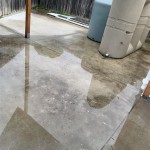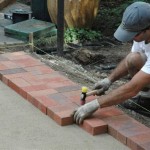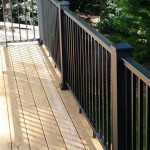How To Make Concrete Patio Stones
Creating concrete patio stones offers a cost-effective and customizable method for enhancing outdoor living spaces. This process allows for control over the size, shape, color, and texture of the stones, resulting in a visually appealing and structurally sound patio. The following guide provides detailed instructions on manufacturing durable and aesthetically pleasing concrete patio stones.
Materials and Equipment Required
The successful creation of concrete patio stones requires the acquisition of specific materials and equipment. These items are essential for mixing, molding, and finishing the stones. The selection of quality ingredients and tools contributes significantly to the longevity and overall appearance of the final product.
Cement: Portland cement is the primary binding agent in concrete. Type I Portland cement is generally suitable for most patio stone applications. Consider using a specialized cement if the patio will be exposed to extreme weather conditions or chemical substances.
Aggregates: Aggregates constitute the bulk of the concrete mixture and provide strength and stability. Coarse aggregate (gravel) and fine aggregate (sand) are both necessary. The size and type of aggregate influence the texture and appearance of the stones. Select aggregates that are clean, well-graded, and free from organic matter.
Water: Clean, potable water is crucial for hydrating the cement and creating a workable mixture. The water should be free from impurities that could interfere with the setting process.
Reinforcement (Optional): For larger or load-bearing patio stones, reinforcement may be necessary to enhance structural integrity. Wire mesh or fiber reinforcement can be incorporated into the concrete mixture.
Coloring Agents (Optional): Concrete pigments or dyes can be added to the mixture to achieve desired colors. Choose pigments specifically designed for concrete use and follow the manufacturer's instructions for dosage.
Release Agent: A release agent prevents the concrete from sticking to the molds. Options include commercial form release agents or vegetable oil.
Concrete Molds: Molds define the shape and size of the patio stones. They can be made of plastic, rubber, or metal. Ensure the molds are sturdy and capable of holding the wet concrete without deforming.
Mixing Equipment: A concrete mixer is recommended for larger batches of concrete. For smaller batches, a wheelbarrow and shovel can be used.
Trowel: A trowel is used for smoothing and finishing the concrete surface.
Level: A level ensures that the patio stones have a flat and even surface.
Measuring Tools: Buckets, scoops, and measuring cups are necessary for accurately measuring the ingredients.
Safety Gear: Safety glasses, gloves, and a dust mask are essential for protecting against potential hazards.
Preparing the Concrete Mixture
The concrete mixture's formulation is critical to the strength and durability of the patio stones. Adhering to a specific ratio of cement, aggregates, and water ensures a consistent and high-quality product.
Determining the Concrete Mix Ratio: A common concrete mix ratio is 1 part cement, 2 parts sand, and 3 parts gravel. This ratio can be adjusted based on the desired strength and workability of the concrete. For enhanced strength, a higher cement content may be required. The water-to-cement ratio should typically be between 0.45 and 0.55. Too much water will weaken the concrete, while too little water will make it difficult to work with.
Mixing the Concrete: If using a concrete mixer, add the dry ingredients (cement, sand, and gravel) to the mixer and blend them thoroughly. Then, gradually add water while the mixer is running until the desired consistency is achieved. The mixture should be wet enough to be easily poured into the molds but not so watery that it separates. If mixing by hand, combine the dry ingredients in a wheelbarrow and mix them with a shovel. Gradually add water and continue mixing until the concrete is uniform in color and consistency. Avoid adding too much water at once.
Adding Coloring Agents (Optional): If using concrete pigments or dyes, add them to the dry ingredients before adding water. This ensures that the color is evenly distributed throughout the mixture. Follow the manufacturer's instructions for the appropriate dosage of pigment.
Evaluating the Concrete Consistency: The ideal concrete consistency should be similar to thick oatmeal. It should hold its shape when scooped up but still be pliable enough to spread easily. Test the consistency by making a small mound of concrete. If the mound slumps and loses its shape, it is too wet. If it crumbles and does not hold its shape, it is too dry. Adjust the water content as needed to achieve the desired consistency.
Molding and Curing the Patio Stones
The molding process shapes the concrete mixture into the desired form, while curing provides the necessary time and environment for the concrete to gain strength and durability. Proper molding and curing techniques are crucial for producing high-quality patio stones.
Preparing the Molds: Clean the concrete molds thoroughly and apply a release agent to the inside surfaces. This will prevent the concrete from sticking to the molds and make it easier to remove the stones once they have hardened. Commercial form release agents are available, or vegetable oil can be used as a substitute.
Filling the Molds: Pour the concrete mixture into the molds, filling them to the top. Use a trowel or other flat tool to spread the concrete evenly and eliminate any air pockets. If using reinforcement, carefully place the wire mesh or fiber reinforcement into the concrete after it has been partially filled. Ensure that the reinforcement is embedded within the concrete and does not protrude from the surface.
Leveling and Finishing the Surface: Once the molds are filled, use a trowel to level the surface of the concrete. Ensure that the surface is flat and smooth. For a textured finish, consider using a brush, sponge, or other tools to create patterns on the surface while the concrete is still wet.
Curing the Concrete: Curing is essential for allowing the concrete to gain strength and durability. Keep the concrete moist for at least 7 days. This can be achieved by covering the molds with plastic sheeting or spraying them with water regularly. The ideal curing temperature is between 50°F and 85°F (10°C and 29°C). Avoid exposing the concrete to direct sunlight or extreme temperatures during the curing process.
Demolding the Patio Stones: After the curing period, carefully remove the patio stones from the molds. Gently tap the molds to loosen the stones and then lift them out. If the stones are difficult to remove, try applying a small amount of release agent to the edges of the mold.
Final Curing and Storage: After demolding, continue to cure the patio stones for an additional 7 days by keeping them moist. Store the stones in a cool, dry place until they are ready to be installed. Avoid stacking the stones too high, as this could cause them to crack or break.
Addressing Common Issues: Several problems may arise during the process of making concrete patio stones. These issues include cracking, discoloration, and inconsistent texture. Cracking can be minimized by using the correct concrete mix ratio, ensuring adequate curing, and avoiding excessive loads on the stones. Discoloration can be prevented by using consistent water quality and avoiding the use of contaminated aggregates. Inconsistent texture can be addressed by thoroughly mixing the concrete and using consistent finishing techniques.
By following these comprehensive instructions, individuals can successfully create durable and aesthetically pleasing concrete patio stones that enhance the beauty and functionality of their outdoor spaces. The investment of time and effort in this process yields a custom-made patio that reflects personal preferences and complements the surrounding environment.

Installing A Diy Paver Patio Is The Ultimate Spring Project

Is It Er To Make Your Own Concrete Pavers Js Brick

How To Diy Large Irregular Concrete Natural Looking Stepping Stones

Diy Patio With Grass Between Pavers And A Fire Pit

How To Build A Flagstone Patio In One Day Merrypad

Budget Friendly Diy Paver Block Patio Interior Frugalista

Budget Friendly Diy Paver Block Patio Interior Frugalista

How To Make Decorative Concrete Pavers With Big Rock Diy

Diy Concrete Patio In 8 Easy Steps How To Pour A Cement Slab

How To Make Patio Blocks Quick And Easy From Concrete Diy In 2024 Pavers Projects
Related Posts








